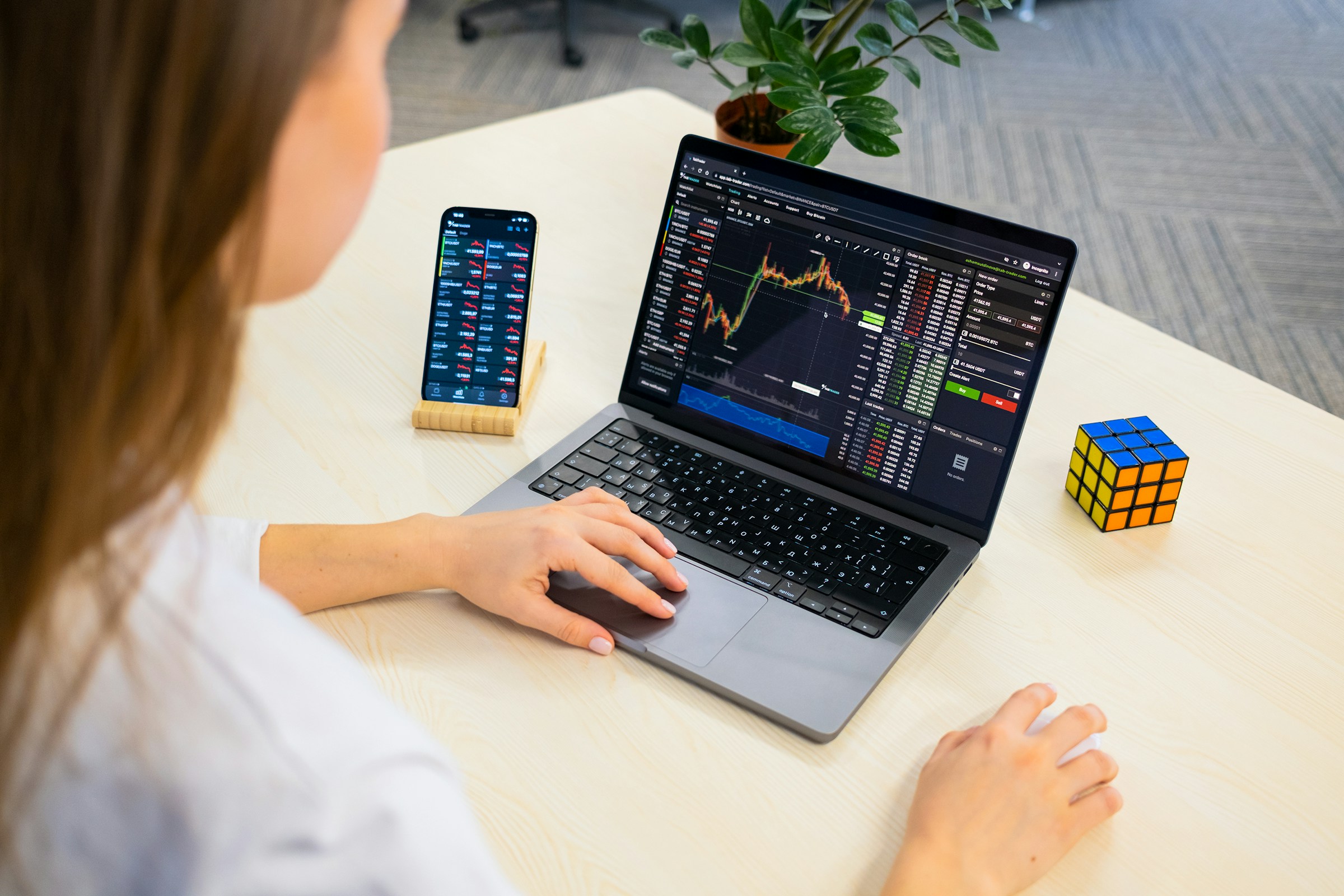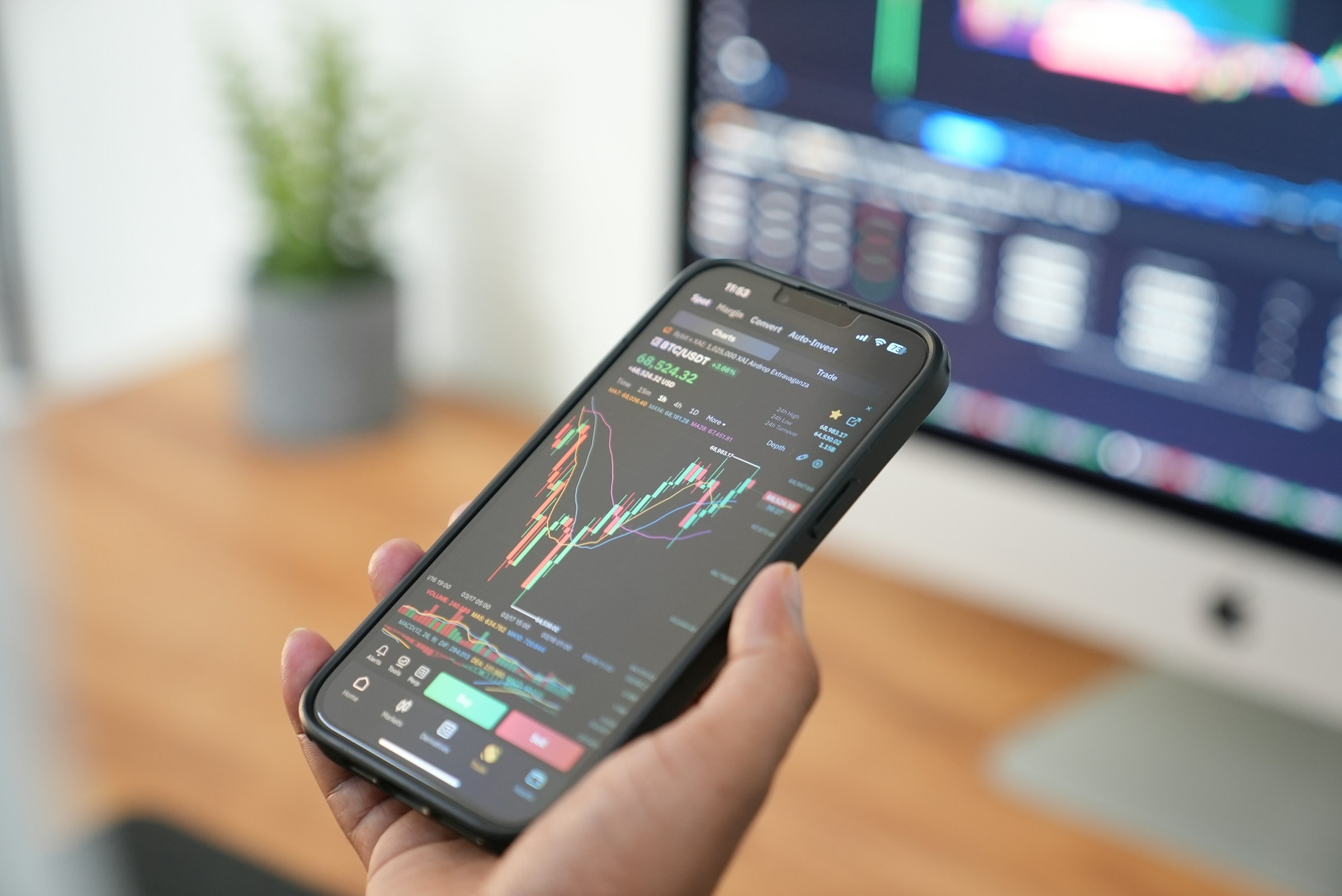12 Best Trading Risk Management Tools
Discover the 12 best trading risk management tools to protect your investments and make smarter trading decisions.

In the fast-paced world of trading, risk management often feels like an afterthought. Yet, it's the key to keeping your capital safe when the market tries to take it from you. Have you ever wondered why, even with a great strategy, you still end up on the losing side?
That's where tools like stop-loss orders and position sizing come in; they help protect your portfolio from market swings. In this guide, we’ll look at some of the best risk management tools out there and how they can help you trade smarter, not harder. If you’ve been searching for where to learn trading, understanding these tools is essential to maximizing your potential.
One program that can help is Aqua Funded's funded trading program. They offer real capital for traders to use without putting up any money of their own, which means less risk for you.
Importance of Risk Management in Trading

Reducing Capital Exposure
Risk management in trading helps you minimize the capital exposed in each trade. By using innovative strategies, you can lessen the impact of a failed trade on your overall capital. This is crucial for long-term success. Protecting your capital allows you to stay in the game even during wild market swings.
Encouraging Consistency
Consistency is a hallmark of successful traders. Risk management fosters this by enforcing a disciplined approach. With predictable techniques, you avoid making impulsive decisions. This keeps your trading aligned with your financial goals.
Cutting Down Your Losses
Every trader wants to limit losses. Risk management directly addresses this concern. It helps shield your account from total loss and gives you a better shot at profiting. By managing risk effectively, you enhance your chance of success in the market.
Related Reading
- How Long Does It Take To Learn Day Trading
- How Long Does It Take To Learn Forex Trading
- How Do You Backtest A Trading Strategy
- Which Trade Is Best For Beginners
- Do You Pay Tax On Forex Trading
- How Many Day Traders Are Successful
- How Much To Start Day Trading
- How To Start Trading As A Student
- Forex Trading Psychology
- How To Do Trading Business
12 Best Trading Risk Management Tools

1. Smart Position Sizing: Stay in the Game
Position sizing is the cornerstone of risk management in day trading. It’s about deciding how much of your capital goes into a trade. The 1% rule is a go-to method for risk, no more than 1% of your capital on a single trade. So, with a $10,000 account, risk $100 max on one trade. This keeps you in the game even if losses stack up, ensuring you don’t throw in the towel after a few bad trades.
2. Stop-Loss Orders: Your Safety Net
Stop-loss orders are a trader’s best friend. They set a price level where you’ll exit a trade to avoid further losses if things go south. For instance, buy a stock at $50 and set a stop-loss at $48 to cap losses at $2 per share. This keeps emotions in check, preventing you from holding onto losing trades out of hope or fear.
3. Risk-Reward Ratio: The Balance of Success
Understanding the risk-reward ratio is crucial. It’s the balance of how much you stand to gain versus what you’re risking. Aim for a 1:2 ratio—risk $1 to make $2. If you risk $2 per share on a trade, set your sights on making at least $4 per share. This way, winners cover the inevitable losers.
4. Diversification: Spread the Risk
Diversification is about not putting all your eggs in one basket. Spread your capital across different assets, sectors, or strategies. This reduces the risk of one bad trade wiping you out: trade stocks, commodities, and currencies to smooth out returns and reduce volatility.
5. Hedging: Protect Your Portfolio
Hedging means taking offsetting positions to cut down risk. If you’re heavy in stocks, consider buying put options or short-selling an index to shield against a market drop. Trade currency pairs to hedge foreign exchange risk in global investments. While it might trim your gains, it cushions against significant losses.
6. Trailing Stop Orders: Lock in Gains
Trailing stop orders move with the market as your trade turns profitable. This helps you secure gains while protecting against downturns. Buy a stock at $50 with a 5% trailing stop. If it climbs to $55, the halt adjusts to trigger if the price dips below $52.25. This lets you ride the momentum without risking too much.
7. Risk Per Trade Calculation: Know Your Limits
Before jumping into a trade, calculate the maximum potential loss. Subtract your stop-loss price from your entry price and multiply by the position size. This shows your risk per trade and helps you tweak position sizes to stay within your risk tolerance.
8. Leverage Management: Control the Power
Leverage can boost both gains and losses. Proper management of leverage is key to avoiding wipeouts. Trading with 10x leverage means a 10% drop in value wipes out your investment. Use leverage wisely, only when success odds are high and risk is under control.
9. Volatility-Based Position Sizing: Adjust with the Market
Volatility can swing prices wildly. Adjust your position size or risk level in volatile conditions to mitigate this risk. If you usually risk 2% of your capital in calm markets, drop that to 1% during wild times. This shields you from big, unexpected moves.
10. Risk Capital Allocation: Keep Emotions in Check
Risk capital is what you’re okay losing without affecting your lifestyle. Only trade with money you can lose. Don’t touch funds meant for living expenses, retirement, or emergencies. This keeps your head clear and decision-making sound.
11. Scenario Analysis: Test Before You Trade
Analyze different market scenarios to see how your strategy holds up under pressure. Simulate extreme volatility to uncover weaknesses in your plan. See how it fares during crashes or liquidity droughts so you’re ready for anything.
12. Emotional Control: Master Your Mind
Emotions can derail trading. Fear and greed often lead to holding losers or exiting winners too soon. Control your feelings to stick to your strategy. Keep a disciplined mindset, ignoring market noise and emotional impulses. This reduces the risk of catastrophic losses driven by emotion.
How to Choose the Best Trading Risk Management Tools
.jpeg)
Mastering Your Risk-Reward Ratio
In trading, risk is inevitable. Before diving into any trade, it’s crucial to decide how much risk you can handle. This boils down to your risk-reward ratio, the balance between potential losses and the profits you aim to achieve. Most traders cap their risk at 1-2% of their total capital per trade and keep their risk across all open positions under 5%.
For instance, with a 2:1 risk-reward ratio and a $1000 account, you could risk $10 to gain $20 on each trade. Using a stop-loss order can help limit losses to $10 if the market turns against you.
Stop-Loss and Take-Profit Orders: Your Safety Nets
Stop-loss orders are essential. They halt substantial losses by automatically closing your position when the market moves against you. On the flip side, take-profit orders lock in gains by closing your position once the market hits a pre-set level in your favor. Your risk-reward ratio drives the placement of these orders. With a 2:1 ratio, if you set a take-profit order 40 pips above your entry, the stop-loss would be 20 pips below. These orders are your shields against unexpected market swings.
Crafting Your Trading Plan
A trading plan is your personal guide to making informed trading decisions. It helps keep emotions out of the equation and keeps you disciplined. This plan is unique to each trader, covering your goals, strategies, risk-reward ratio, and more. It also serves as a trading diary, helping you track and learn from past trades. This ongoing analysis is key to refining your approach and honing your skills.
Managing Leverage Wisely
Leverage can amplify both profits and losses. For example, with a 20:1 leverage ratio on a $100,000 EUR/USD trade, you’d need $5,000 to open the position. If the market rises by 5%, you’d gain $5,000. But a 5% drop would mean a $5,000 loss. The higher the leverage, the greater the risk, so always use stop-loss orders to protect yourself.
Ready to Elevate Your Trading Game?
With AquaFunded’s funded trading program, you can turn your skills into substantial profits without risking your own capital. We provide access to accounts up to $400K with unmatched flexibility, including no time limits and up to 100% profit split. Join over 42,000 traders who’ve already collected more than $2.9 million in rewards. Start trading today with instant funding options or prove your skills in our customizable challenge paths.
Related Reading
- How To Learn Trading Online
- Is Day Trading Worth It
- Is Day Trading Hard To Learn
- Trading Strategy For Beginners
- Position Trading Strategy
- Profitable Gold Trading Strategy
- Profitable Gold Trading Strategy
- Trading Strategy For Beginners
- Position Trading Strategy
- Option Trading Technical Analysis
7 Trading Risk Management Tips for Success

1. Transform Your Skills with Aqua Funded
AquaFunded is an advance for traders looking to leverage their skills without putting personal capital at risk. This platform offers access to accounts up to $400,000, with incredibly flexible trading conditions. You can enjoy no time limits, achievable profit targets, and a profit split of up to 100%. Join a thriving community of over 42,000 traders who have already earned more than $2.9 million, all with a 48-hour payment guarantee. Start trading today with instant funding options or prove your skills through customizable challenges and keep everything you earn.
2. Know Your Risk Tolerance
Risk tolerance is a personal thing. Some traders are comfortable risking 1% of their account per trade, while others might go up to 5%. However, it’s essential to determine what level of risk you’re comfortable with and stick to it. Increasing your risk as you gain experience is fine, but be wary of going too high. For example, risking 10% of your account per trade means you could drain your account after just ten consecutive losses. In contrast, risking 2% per trade would require fifty consecutive losses to do the same.
3. Nail Down Your Position Sizing
Once you’ve established your risk tolerance, correctly sizing your trades is crucial. Misjudging position size can lead to unnecessary losses. For example, if risking $100 per trade, trading a standard lot of EUR/USD isn’t wise. A drop from 1.1300 to 1.1200 would hit your risk limit. Customizing your position sizes ensures you’re risking the amount you intend. In currency trading, a standard lot is 100,000 units, or $10 per pip for EUR/USD, while a mini lot is 10,000 units. Flexibility in risk can significantly impact your trading success.
4. Time Your Trades Wisely
Markets are open 24 hours, which means you’ll need to decide how much time to devote to trading and when. This decision also helps you get into the right mindset. Trading at odd hours, like 3 a.m., might lead to poor choices. Exit orders can help manage risk when you’re not entirely focused on the markets. Some traders use alerts to notify them when their positions are nearing maximum loss or profit targets.
5. Steer Clear of Weekend Gaps
As markets close for the weekend, they don’t stop moving entirely. By the time you can trade again, prices might have shifted significantly. These gaps can affect stop losses or profit targets. A solid risk management plan should address this. Consider closing positions on Friday afternoon to avoid being caught off guard by significant gaps. Alternatively, you might want to exploit these gaps using a trading technique.
6. Stay Informed with the News
News events can impact markets significantly, leading to significant moves or sudden gaps. Employment reports, inflation data, and central bank decisions are just a few examples. These events can cause price shifts even when markets are fully open. Unless you’re taking a strategic risk, trading around news events requires careful risk management.
7. Only Trade What You Can Afford to Lose
The mantra of not investing more than you can afford to lose is popular for a reason. Trading is inherently risky and unpredictable, so putting your livelihood on the line is rarely wise. Instead, invest intelligently and consistently to protect your hard-earned capital.
Join Our Funded Trading Program Today - Trade with our Capital and Keep up to 100% of the Profit.
Trading without risking your own money sounds like a dream, right? AquaFunded makes it a reality. They offer up to $400K in funding, letting you trade with someone else's capital. There are no time limits to worry about, making it easier to achieve profit targets. Plus, you can keep up to 100% of your earnings. Their 48-hour payment guarantee means you get your rewards quickly. It's a fresh way to trade, backed by over 42,000 traders who've already earned millions.
Instant Funding: No Waiting, Just Trading
Who wants to wait around when there's money to be made? With AquaFunded's instant funding options, you can start trading right away—no need for lengthy approval processes or red tape. You can either jump in with instant funding or prove your skills through a customizable challenge. It's all about getting you into the market as quickly as possible.
Flexible Trading Conditions: Real Freedom for Traders
AquaFunded gives you the freedom to trade the way you want. They offer the most flexible trading conditions in the industry. No time limits, easy profit targets, and up to 100% profit split. This flexibility makes it easier for traders to succeed. You can focus on making the best trades without worrying about strict rules or deadlines.
Trading Risk Management Tools: Keep Your Earnings Safe
Managing risk is crucial in trading. AquaFunded provides tools to help you manage your risk effectively. These tools can help you protect your earnings and make smarter trades. By using these tools, you can minimize losses and maximize profits. It's all about trading smarter, not harder.
A Global Network of Successful Traders
Join a community of over 42,000 traders worldwide who've already collected more than $2.9 million in rewards. AquaFunded's global network of traders is a testament to the success of their approach. You'll be part of a community of like-minded traders who are all working towards the same goal: making money without risking their own capital.
Related Reading
- Algorithmic Trading Risk Management
- Best Forex Trading App For Beginners
- What Is Risk Management In Trading
- Day Trading Risk Management
- Forex Risk Management Tools
- Best Day Trading Platform For Beginners
- Best Indicators For Swing Trading
- Best Platform For Day Trading Crypto
- Best Beginner Trading App


